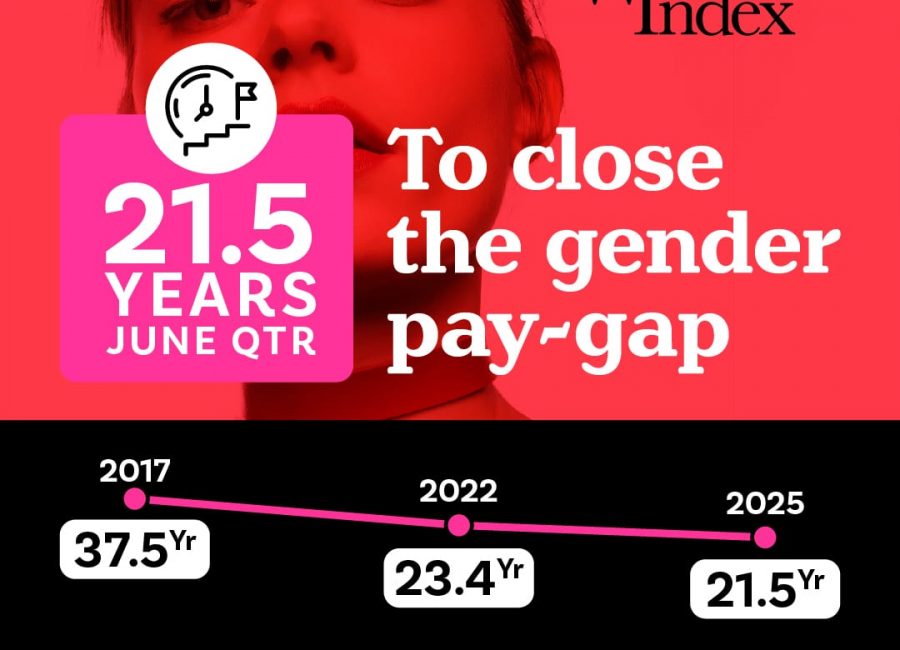Australian women are making financial progress despite facing numerous gender inequalities and the early setback in job cuts relative to men at the start of the COVID-19 outbreak, the latest Financy Women’s Index shows.
The Financy Women’s Index rose by 2.2% to 74.1 points in the September quarter from a revised 73.3 points in June – this is about half the pace of progress recorded in the June quarter at by 4.2%.
Improved female jobs growth, which was harder hit compared to male by the onset of the pandemic and government shutdowns in March of this year, coupled with a fresh high in female ASX 200 board appointments and a narrowing of the gender gap in the underemployment rate, helped to push women’s progress higher in the September quarter.
Whilst this result gives us more reason to feel optimistic as we approach the end of 2020, the situation remains volatile and time will tell if COVID-19 has short or long-term impacts on women’s financial progress and equality.
Despite the progress Australian women remain in a more financially insecure position relative to men and continue to face gender gaps across all but one of the financial indicators measured by the Financy Women’s Index.
Ms Nicki Hutley, Partner at Deloitte Access Economics, says there can be no doubt that COVID-19 has placed greater burdens on women in myriad ways.
“The silver lining, if it can be called that, was the brief period of free childcare.
“It was a massively missed opportunity for the Federal Government not to introduce this support on a permanent basis and generate significant long-term increases in female participation and economic growth.
“However things play out from here, COVID-19 will leave two legacies for women. The first lies in the direct impact on women as workers, often casual, in the most vulnerable sectors, and as primary carers.
“The second, and more important legacy will be the policies implemented to address those imbalances to ensure when the next shock occurs – be it another virus, extreme weather disruptions or financial sector driven – women do not again bear a disproportionate burden,” says Ms Hutley.
The timeframe to Australia achieving economic equality is unchanged at a revised 32 years because of the significant gender gap in the worst performing indicator which is unpaid work.
The number of women with ASX 200 board positions has increased in 2020 with women now occupying 32.1% of board positions as of the end of October2, which is up from 31.2% in the June quarter. The result is nearly triple the rate of progress (2.6 percentage points or ppt) in the 12 months to September 2019 (1ppt).
The improvement comes despite a drop in the number of women occupying key leadership positions, including as CEO of public companies.
“As long as women do not progress within the management ranks we won’t just have a gender pay gap we’ll have a salary chasm,” says Connie Mckeage Managing Director of Strategic Advantage and founder of OneVue.
According to Labour Force data by the Australian Bureau of Statistics (ABS), Arts and Recreation Services and Accommodation and Food Services
both hired 19% more women across their workforces in the quarter.
Younger women, aged 15-24 years who, along with older women, were hardest hit by job losses at the start of the pandemic have been largely left out of the partial recovery in female employment.
The female underemployment rate declined by 4ppt to 12.46% in September, compared to 12.93% in June and a high of 15.37% in April. Prior to the COVID-19 restrictions introduced in March, the female underemployment rate had stayed in the low double-digits since April 2014 and throughout that time has been about double the male underemployment rate.
The recovery in female employment coupled with higher male early access to super withdrawals could possibly help the gender gap in superannuation to narrow from 31% in favour of men.
The gender gap in unpaid work, calculated from the latest data obtained prior to the pandemic, shows women in relationships, with or without children, were doing 60% more unpaid tasks than men. This disparity is widely considered a significant barrier to increased female work participation and therefore financial progress.
The gender pay gap stands at 14% in the September quarter, which is slightly higher than the 13.9% reported in the March quarter of this year.
The gender gap in non-school education is undergoing a shift for the first time in decades with male enrolment growth outpacing that of female.
The number of women aged 15-64 years completing a non-school qualification at Certificate III level or above such as a University Degree, fell by 7% or 86,000 female enrolments to 1.105 million in the 12 months to May of this year – reflecting the largest decline in at least 20 years, according to ABS figures on Education and Work.
Join the Financy social communities that support achieving fearless economic equality on LinkedIn and Facebook or follow our official pages on LinkedIn, Facebook, Instagram and Twitter.












